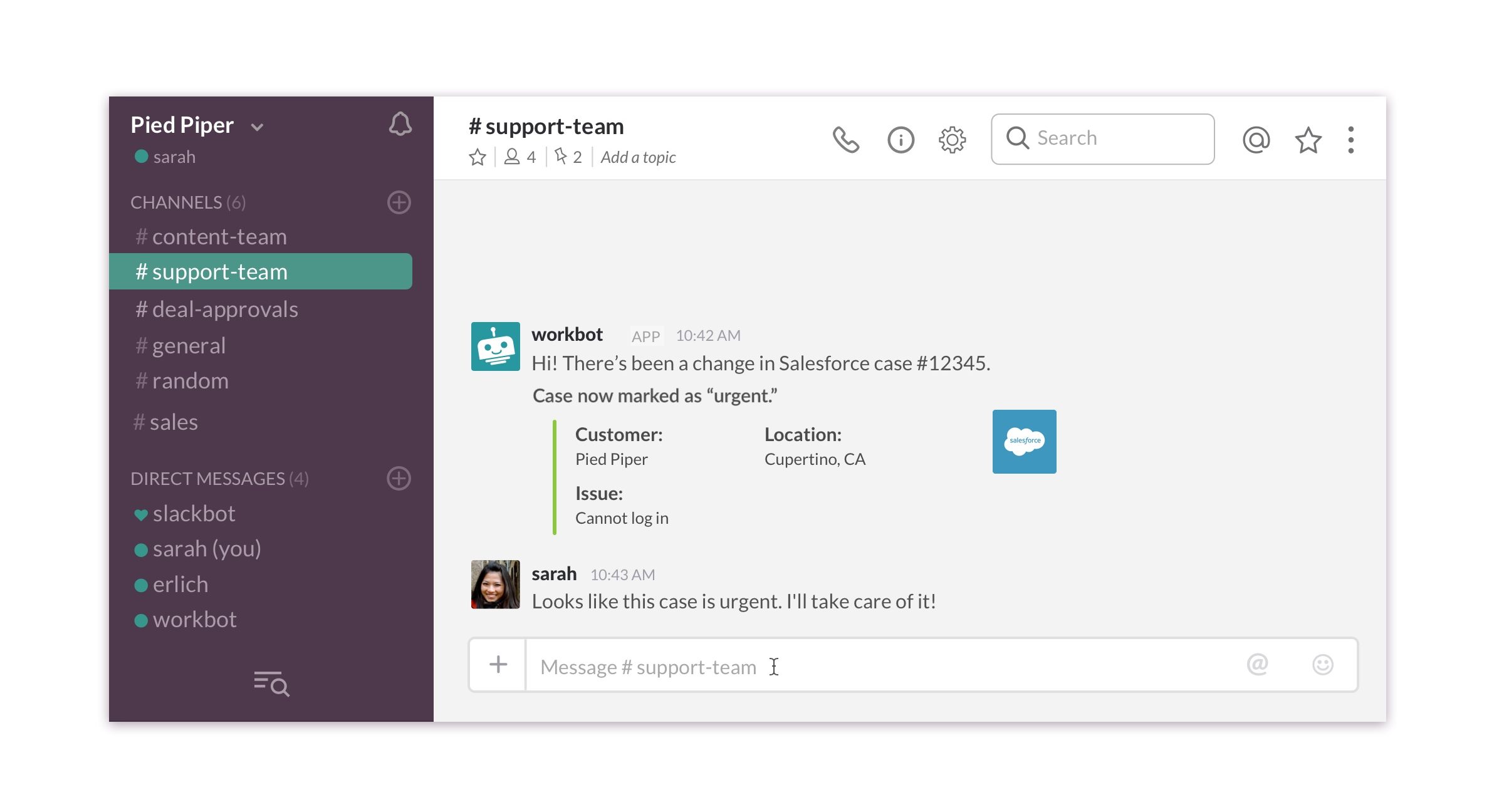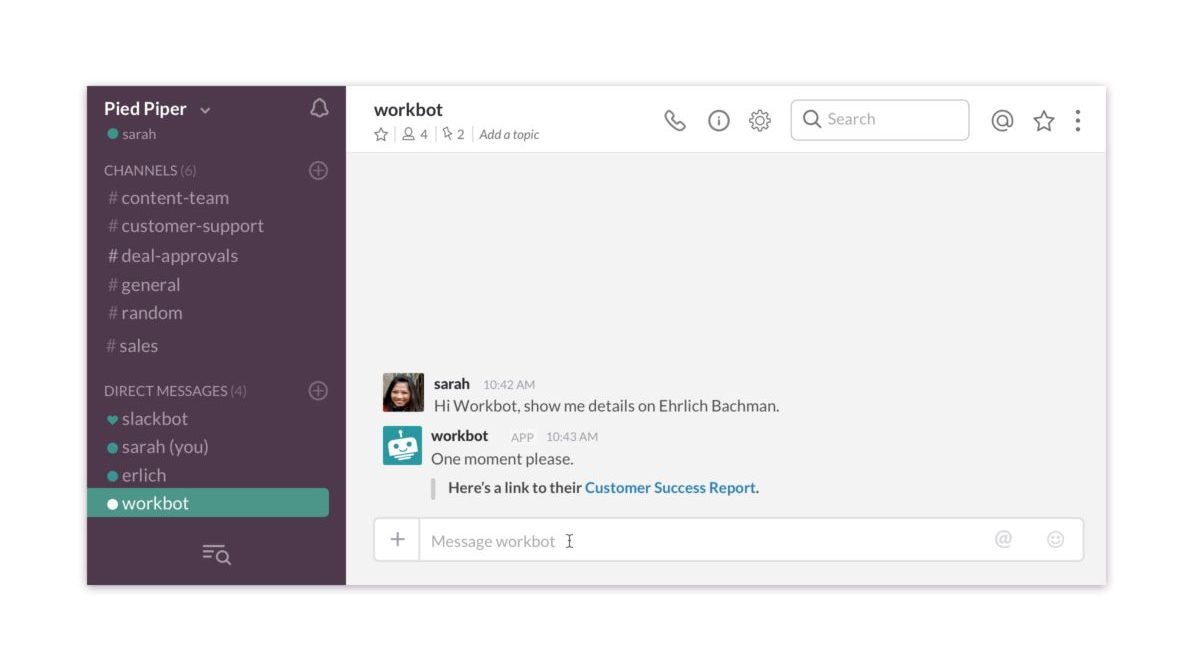Rapid7 (NASDAQ: RPD) is a leading provider of analytics solutions for security and IT operations. With over 7000 clients across more than 120 countries, the firm specializes in vulnerability management, app security, penetration testing, IT management, and incident detection. Their mission is to unite IT, security, and DevOps teams to make security an inherent outcome of all innovation.
Like many organizations, Rapid7 was impressed by the functionality that best-of-breed SaaS apps offer. The company was also aware of the potential downside to growing its app ecosystem: disparate apps can create data silos, where crucial information exists only within one app and isn’t easily accessible. Silos can impede an organization’s productivity by slowing down business processes from order fulfillment to support ticket resolution. In order to fulfill its commitment to its external customers, Rapid7 needed an integration solution that could connect its best-of-breed apps to streamline its internal operations.
Addressing the SaaS Explosion
John Herson is an Enterprise Solutions Architect in the Enterprise Architecture and Technology Solutions Team at Rapid7. “We’re expanding from a security firm to becoming a SaaS company for security and IT professionals so they can have critical insights into vulnerabilities across their infrastructure,” he says. “My team focuses on achieving our company mission internally and making our own internal processes as efficient as possible,” he says.
Initially, Rapid7 used NetSuite as its hub for all internal activity. “NetSuite was, at one time, the be-all and end-all for everything we did,” Herson elaborates. Eventually, the company transitioned to best-of-breed SaaS apps, which offer specialized features and functionality for each line of business.
Related: 3 NetSuite automations that can help your finance team thrive
Solving this gap between all of their SaaS apps was one of the first challenges Herson was tasked with. “Individual apps are good at solving one or two problems, but eventually data needs to move between them,” Herson explains. “[We needed an integration platform in order to] get actionable insights and to make sure that information is visible across all our business apps.”

Today, Rapid7 uses NetSuite, Salesforce, Slack, Marketo, and more.
Picking a Platform with Slack in Mind
Slack is widely known as the fastest growing business app of all time and Rapid7 started using it in March 2017. Herson wanted to make sure the integration and automation platform they chose could not only automate their cloud apps like NetSuite and Salesforce, but also could create secure and robust integrations that involved Slack. When he asked Slack who fit the bill, Slack recommended Workato.
The Rapid7 team selected three integration vendors to evaluate and included Workato based on Slack’s recommendation. “Time-to-market was a critical element when evaluating vendors,” says Herson. After a three-month-long assessment period, Herson’s team selected the intelligent automation platform. “Workato quickly moved into the lead because of its price and time-to-market,” he says. “But the UX was also a factor; you can log in and see all your apps and connectors in a familiar layout reminiscent of a smartphone.”
Watch Dodwad and Mike Flynn, a Principal Application Engineer at Rapid7, further explain their reasons for choosing Workato and the impact it’s had on their team:
Triaging Customer Tickets Faster with Salesforce ServiceCloud and a Slackbot
After selecting Workato, Herson’s team quickly got to work mapping out key workflows to automate. They started by using Workato to connect Slack to Salesforce Service Cloud in order to create real-time case status notifications in Slack for the customer service team.
“We want people to use Slack as their hub to interact with other apps during their day-to-day work.”
Priya Dodwad, an Application and Integration Engineer on Herson’s team, says that switching to Slack revolutionized how the company did its work. “Slack is so intuitive and easy to use that our entire organization quickly adopted it. We started thinking about how we could help our internal stakeholders by automating processes using Slack,” says Dodwad. “We want people to use Slack as their hub to interact with other apps during their day-to-day work.”
She explains that Slack is an especially valuable tool for the support team. “Our customer service (CS) agents work on many support cases from external customers every day,” she says. To help them manage the workload, agents receive email notifications every time a case’s status changes. But those notifications aren’t in real time, Dodwad explains, and the flood of emails can quickly become overwhelming for even the most seasoned CS agent.

To lighten the load, Rapid7 created an automated workflow involving Salesforce’s Service Cloud and Slack. “Whenever a case changes status, the CS team receives a Slack notification in a dedicated channel,” says Dodwad. “This way, they can see all the important case information right from Slack.” The notifications allow CS agents to triage and respond to cases much more quickly, improving the customer experience. Dodwad expects to build the workflow out further so that agents receive notifications only for the cases assigned to them.
Minimizing the Customer Success Management Team’s Research Burden with a Slackbot
Herson and Dodwad are constantly innovating new ways to use bots to do more work for Rapid7. “We’re thinking about a bot-based strategy,” says Dodwad.
Instead of using an out-of-box Slackbot, she explains, the company decided to build its own using Workato’s Workbot. “Custom bots are more scalable,” she says, “and Workato provides the framework for making a bot truly powerful through integration.”
Rapid7 hopes to use Workato and Workbot to reduce the manual work its Customer Success Management (CSM) team faces every day. Because they’re responsible for onboarding new customers, the CSM team holds regular set-up calls with recently acquired clients.
“In a matter of a few seconds, you have all the information that you previously spent hours gathering.”
“They spend a lot of time researching each customer before getting on those calls,” explains Dodwad. “They look at how many support cases the customer has opened, how many of those cases have been resolved, and so on.”

In total, the CSM team spends seven to eight hours every week doing this research. To make this process more efficient, Dodwad says, Workbot will be customized as a CSM bot that will pull key customer information from other apps and serve it to agents in Slack. “Agents can invoke the Slackbot using a slash command in Slack. Then it will consolidate all the crucial information from apps like NetSuite, Salesforce Sales Cloud and Service Cloud into a Customer Success Report PDF and give them the link in Slack,” she explains. “In a matter of a few seconds, you have all the information that you previously spent hours gathering.”
In addition to delivering the file via Slack, the integration will also save the PDF to a shared drive for easy access later. “By automating the research process with Workato, we save the CSM team time so they can focus on vetting deals and providing a better customer experience,” Dodwad continues.
Linking NetSuite and Salesforce for Q2O
Another important area where Rapid7 is implementing Workato is to connect Salesforce—its system-of-record—with NetSuite, which is the company’s customer master.
Herson’s team is creating a comprehensive series of integrations to sync accounts, contacts, and partner details between the two apps. “We’re getting ready to roll a whole host of productionable integrations between Salesforce and NetSuite, primarily, as part of our second release of our Salesforce implementation,” he said.
“We have two major Workato integrations that just keep NetSuite and Salesforce in sync with one another. The first is bi-directionally syncing the Salesforce account to the company in NetSuite. The other is a contact sync, so a contact in Salesforce syncing to a contact in NetSuite, also bi-directionally,” Herson explained.

In addition, Herson’s team has a few other Workato automations in place. One is an integration to sync partner data from Salesforce back to NetSuite so they can fulfill orders. The other helps automate the quote to order process.
“The other critical business function is the sales overflow,” said Herson. “We’re able to take a signed, approved quote and convert that into a sales order in NetSuite for fulfillment, provisioning, and revenue recognition. We’re consolidating the downstream functions of a sales order – the sales order creation happens in Salesforce and it’s pushed into Netsuite for those back office functions.”
“Because Workato can take care of our integration and automation needs, including bot framework, Workato kind of opened up all the avenues for us in one go.”
Related: Everything you need to know about automating across your lead lifecycle
Streamlining the Delivery of Invoices and Their Reminders
Before Workato, Rapid7 had to manually send each customer an invoice and deliver several reminders if necessary (e.g. 15 days past due, 30 days past due, etc.). This was an extremely time consuming process for Rapid7’s RevOps team, and it prevented customers from receiving timely invoices and reminders, thereby also delivering them a poor experience.
With Workato, the team has been able to automate their entire invoicing workflow. This has allowed employees in RevOps to take a hands-off approach, while ensuring that customers receive notifications around their invoices on time.
Opening Avenues to Integration, Automation, and Bots with Workato
For Herson, the benefit of integration is innate: “It’s a fundamental business benefit: data becomes more powerful when it’s connected, as opposed to siloed.”
The company also expects major improvements in support case time-to-resolution, as well as a CSM staff that is more focused on strategic work rather than administrative tasks. “The CSM team is spending, as Priya mentioned, between six to eight hours a week on manual preparation. We expect that to drop significantly to minutes a week, as opposed to hours a week,” said Herson.
But that’s not where Rapid7’s integrations end.
Today, they’ve integrated more than 20 of their applications by using Workato. And they now have more than 30 employees across 6 teams using the platform to transform processes across support, customer success, sales ops, marketing, and HR teams.
Ultimately, Rapid7’s expects that Workato will continue to play an integral role in streamlining the company’s internal operations and allowing the company to grow. According to Flynn, “Things that used to be such a big pain, are no longer a pain anymore. Workato is the new norm at Rapid7. We’re using it everyday to find new ways to automate our manual tasks.”
